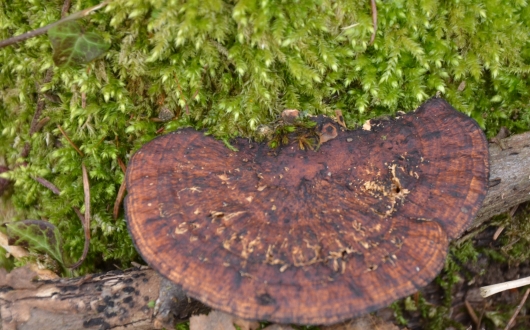The route from the runway of Prečna Airport (approx. 500m from the road connecting the villages of Zabukovica and Hruševec) in the south-east direction towards the village of Loke.
The route begins in a small oak and hornbeam forest above a small sinkhole into which water from three small springs and torrential water from the macadam route along the airport runway flow. The banks of the watercourses are overgrown with trees (oak, white hornbeam, common alder), shrubs (hazel…) and climbing plants (common ivy, hops). After a good 400-meter walk, the route along the left river-bed leads to a private property with a landscaped pond and then leads along the marsh area, overgrown with common reed. Above the slopes there is arable land.
A foggy winter day that just smells like winter because of the cold. The temperature in the morning is a few degrees below zero and during the day it rises a few degrees above zero. This is the time when nature rests. But is that really so? My walk through Temenica Habitat today convinced me that living beings in nature are already preparing for a new life. Seeing the shoot of common hazel (Corylus Avellana)
.jpg)
with many male catkins just waiting for the favourable temperatures in the surroundings to sprinkle its pollen convinces me otherwise. Of course, then, buds with female flowers must also open up. I am similarly amused by seeing shoots of male flowers on the black alder (Alnus glutinosa). Open little cones, evolved from the female inflorescence over the past year, shily make themselves visible as well.
On the way, I come across a rotting trunk of aspen, from which woody fruiting bodies of Phellinus tremulae boastfully grow.
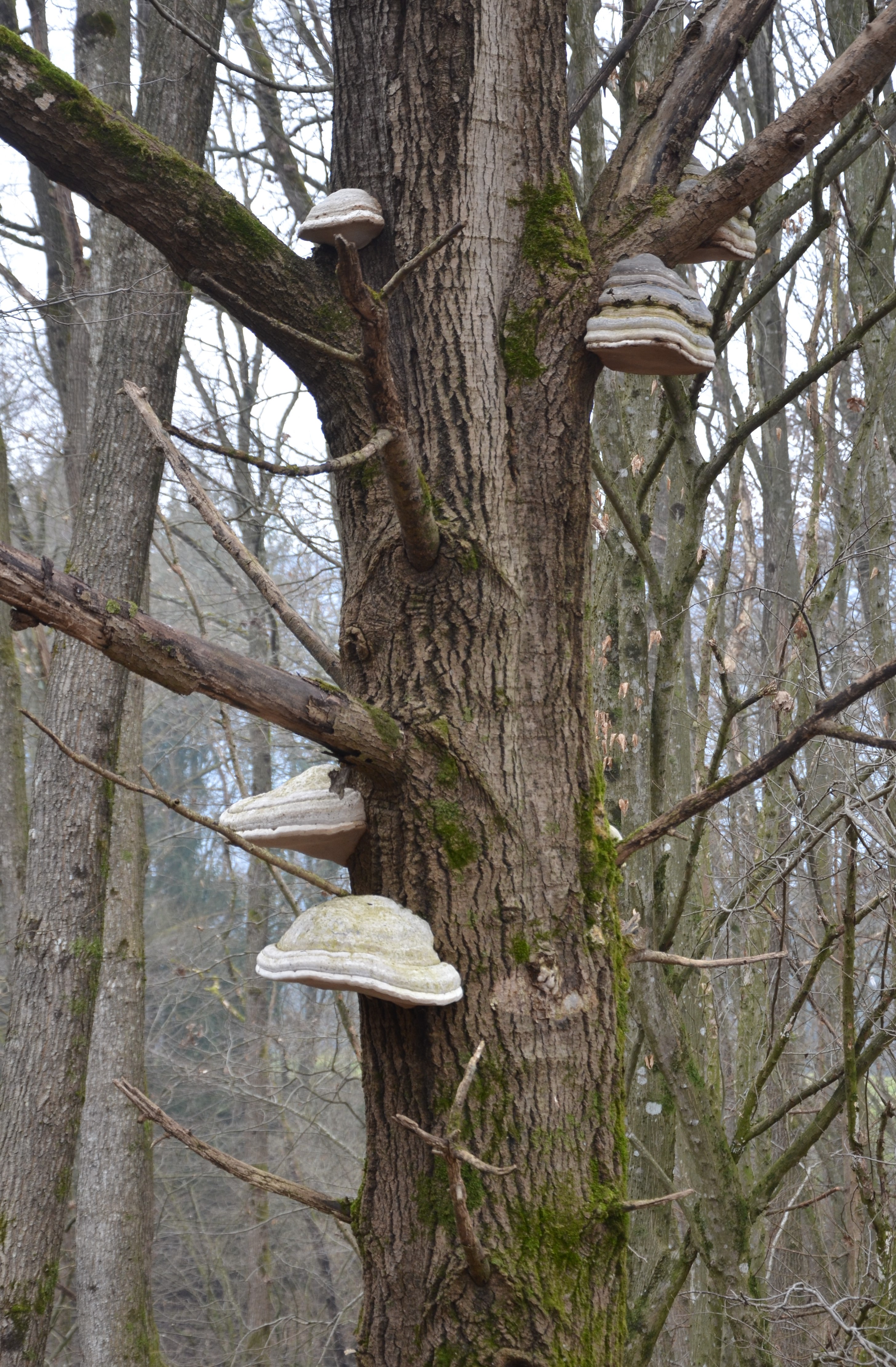
It is a parasitic fungus that causes the white rot of wood and the discoloration of heartwood. Not far forward on the decaying birch branch, I notice the birch polypore (Fomitopsis betulina).
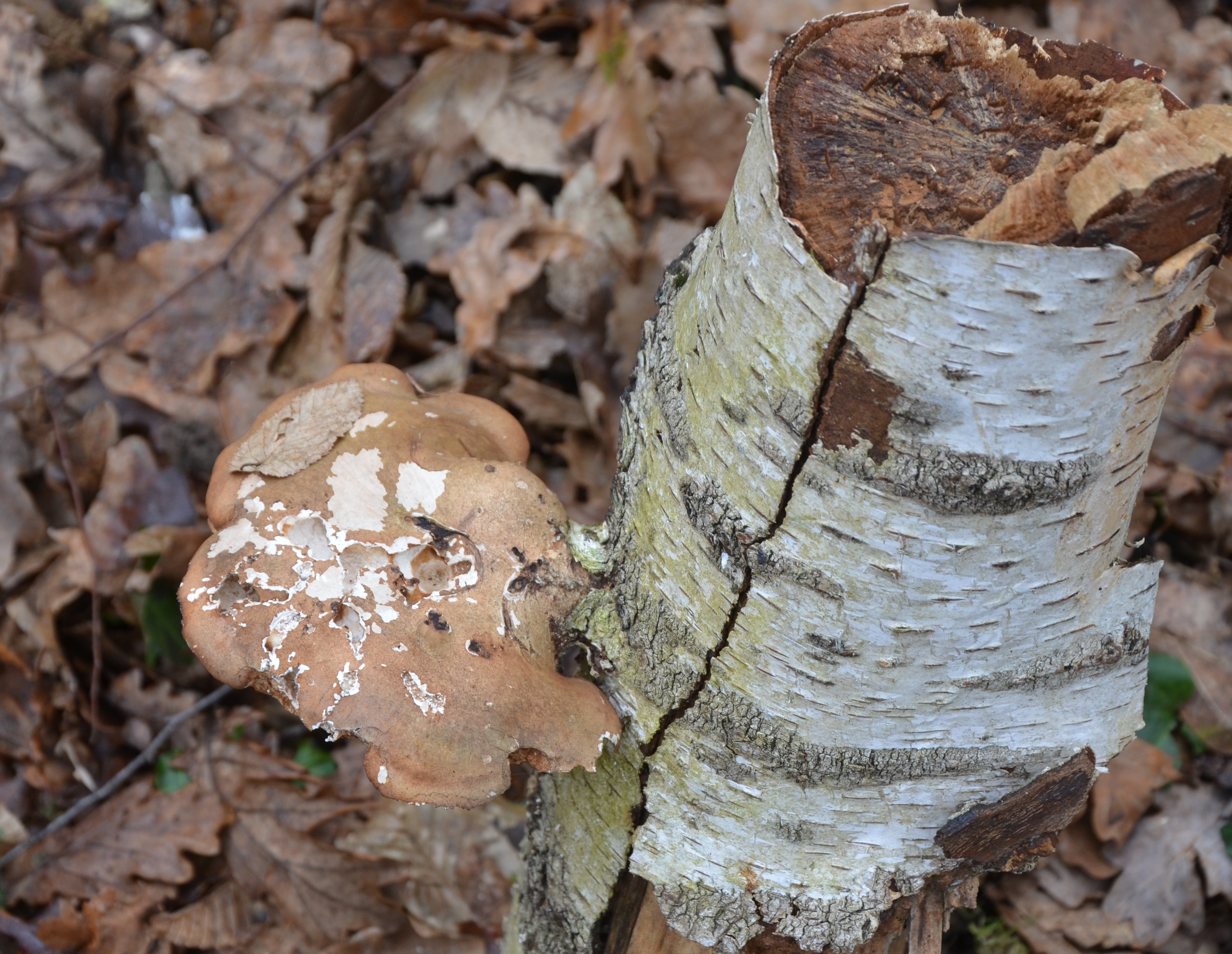
This is also a parasitic mushroom and it attacks the debilitating specimens of the common birch. A little further on, my eye catches the woody fruiting bodies even on the dead trunk of the black alder.
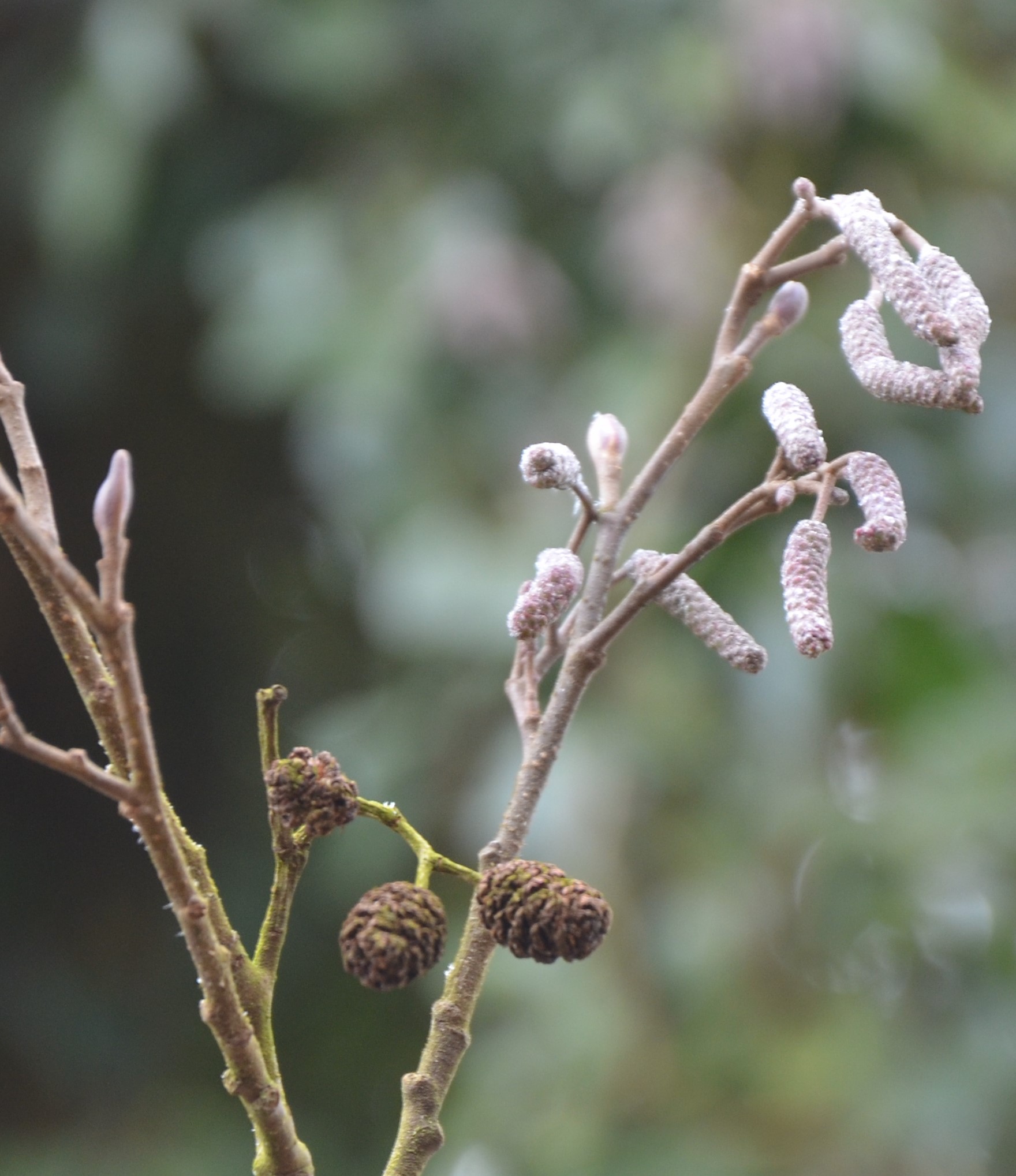
These are the fruiting bodies of the thin walled maze polypore or the blushing bracket (Daedaleopsis confragosa), a saprophytic fungus. What especially draws my attention are the numerous fruiting bodies of Coriolus versicolor or Polyporus versicolor (Trametes versicolor) overgrowing a dead hornbeam trunk. The concoction or tea from the fruiting bodies is medicinal and has been used in Chinese and Japanese traditional medicine. Polysaccharide-K (PSK) is obtained from the mushrooms for concomitant therapy in the treatment of cancer, as it alleviates the side effects of chemotherapy, especially in cancer of the stomach, colon and lungs. All these mushrooms are also active in winter, when they take part in readying the ground for new growth in the place of the dead trees.
By the tidy pond with a thin translucent ice cover, I stop, surprised by the hardy water lily leaves (Nymphaea variety Charles de Meurville) which stretch out beneath it.
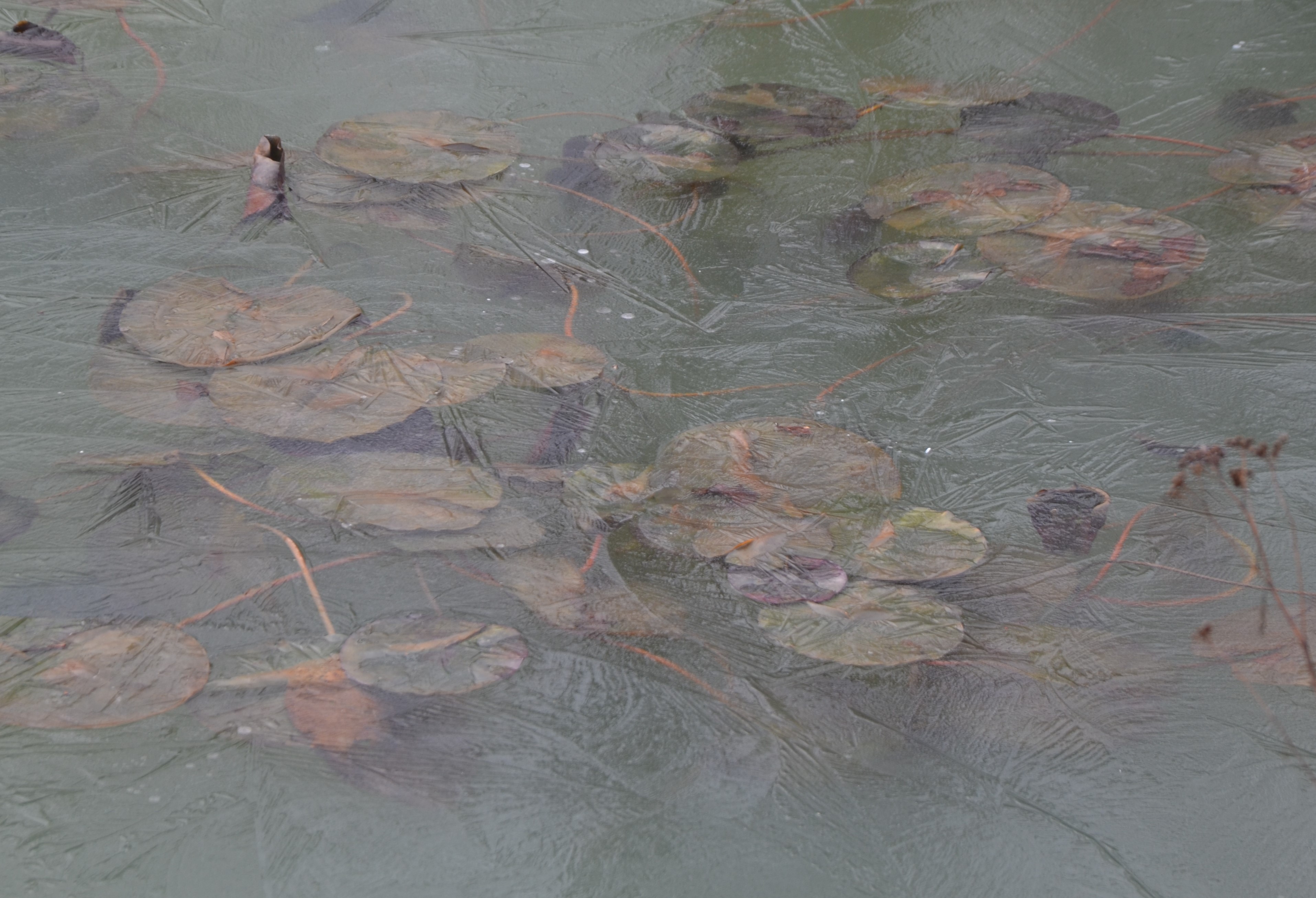
Along the pond, my attention is also drawn to the tiny life on the ground. I notice the lichens that I pay all my attention to. Particularly interesting is the pink earth lichen (Dibaeis baeomyces), which is characteristic of unstable soil. Further on, I notice three more bush lichens on the ground, namely the reindeer lichen (Cladonia portentosa),
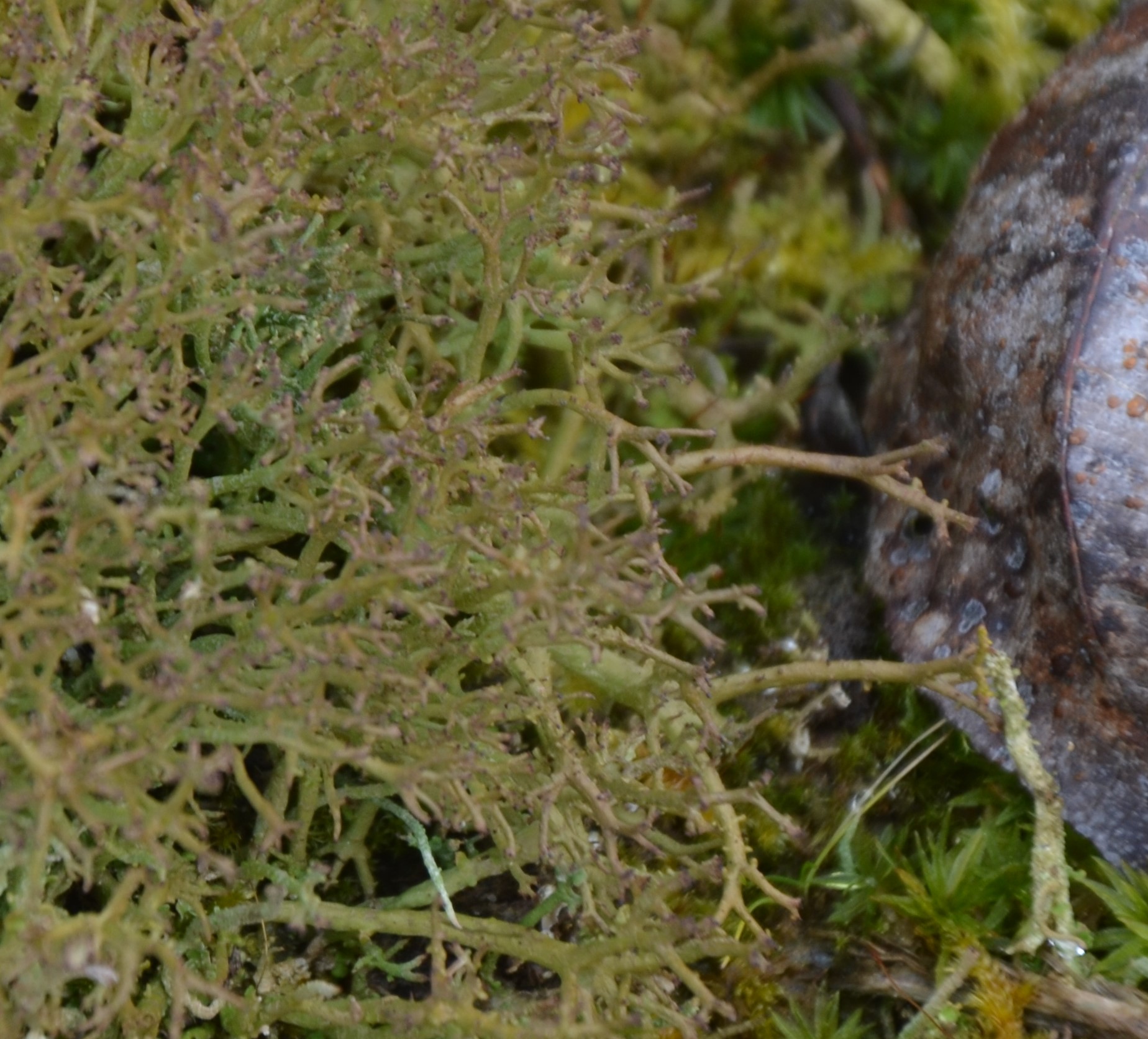
the cup lichen (Cladonia coniocraea)
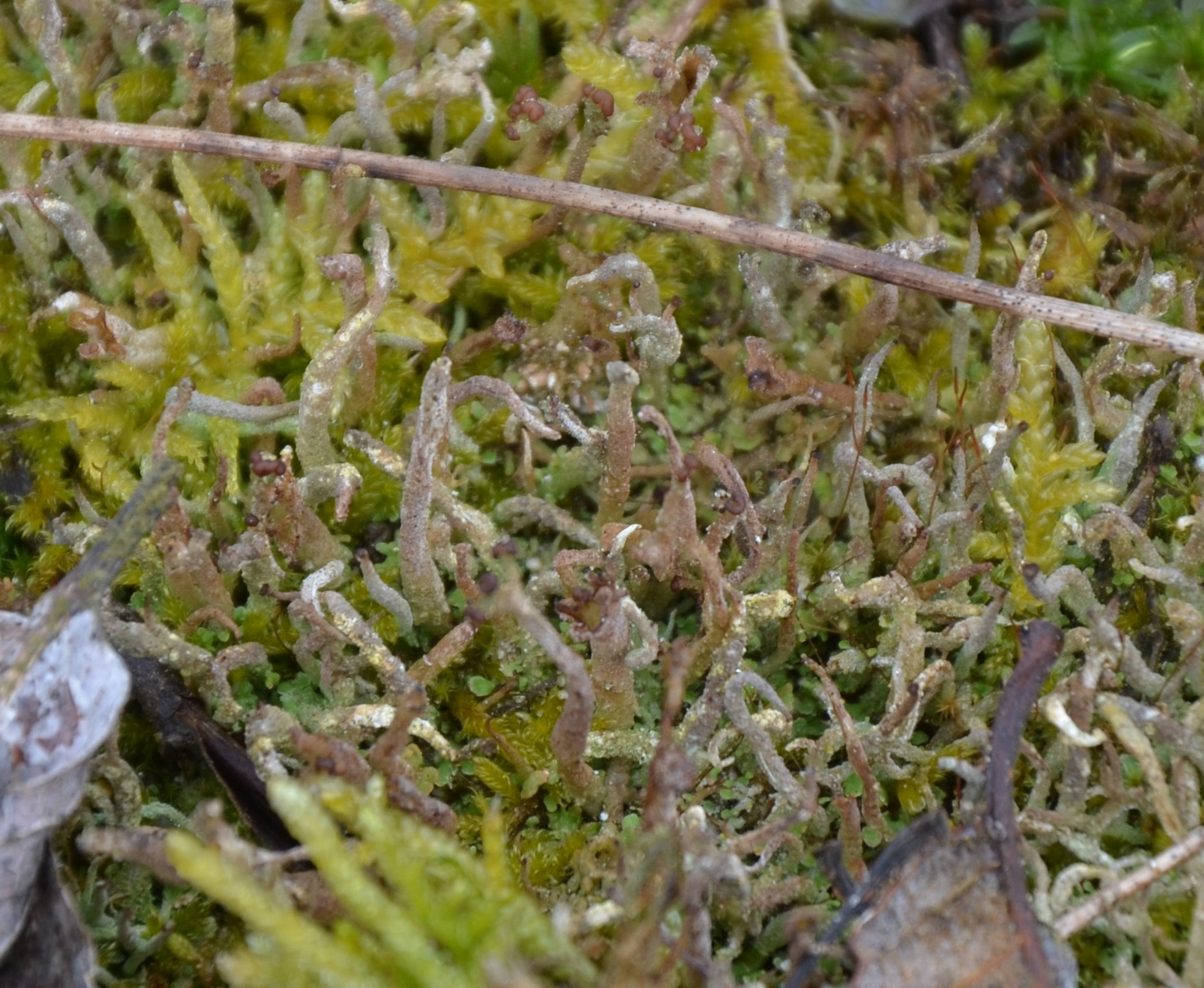
and the pebbled pixie cup (Cladonia pixidata).
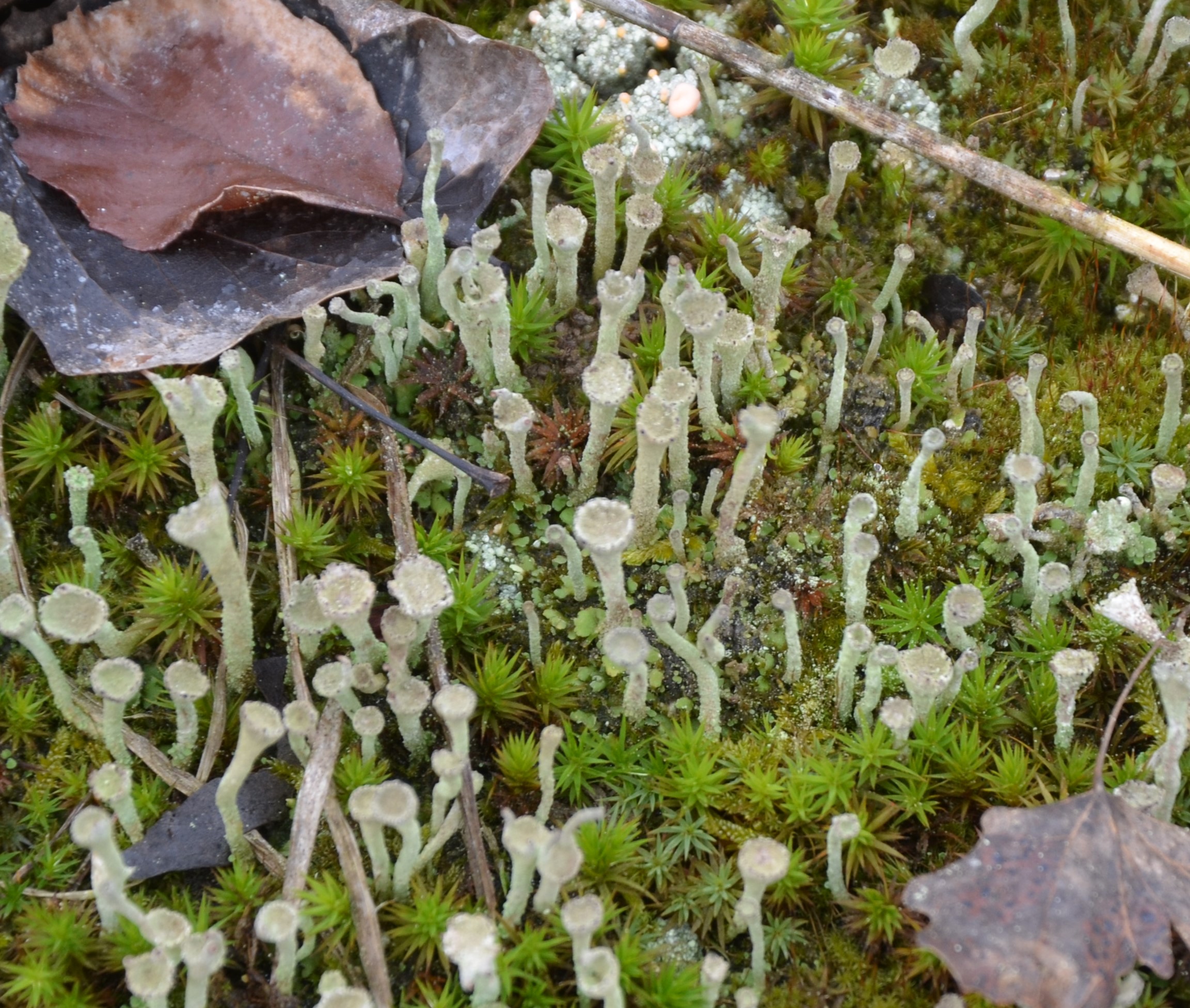
In shrubby cladonia, there is a substance that acts against gram-positive tuberculosis-causing bacteria and can inactivate certain viruses.
My gaze then stops at the marshy area of the habitat. At the edge of the still water, dead stalks of bulrush (Typha latifolia) rise, from the peaks of which small seeds are scattered through the surrounding area with the help of wind. The plant is further expanded by means of underground rhizomes. Behind the rush, a larger reed surface extends in the background – the common reed (Phragmites australis). It can grow up to 4m high from 1-m-deep water. Many species of birds and insects are found in these reeds. A carved trunk of a dead black alder is evidence of the presence of certain bird species.
Due to the abundance of water, the wetland is also an ideal place for moss development. It can be found on the ground as well as on tree trunks, and even on the branches of certain shrub species. I am delighted by the sight of a common fern species, the common club moss (Lycopodium clavatum).

In folk medicine, the overhead part of the herb-like plant was used as blood cleanser, against rheumatism and gout, kidney and bladder diseases. Walking further, I spot the bank haircap (Polytrichum formosum), whose translation from German means a beautiful girl's hair. The species is important because it holds water strongly. In the trunk of some trees, I notice a species of Eurhynchium angustirete,

and on the branches of black elder I am surprised to see sedentary piles of a moss from the Atrichum family.
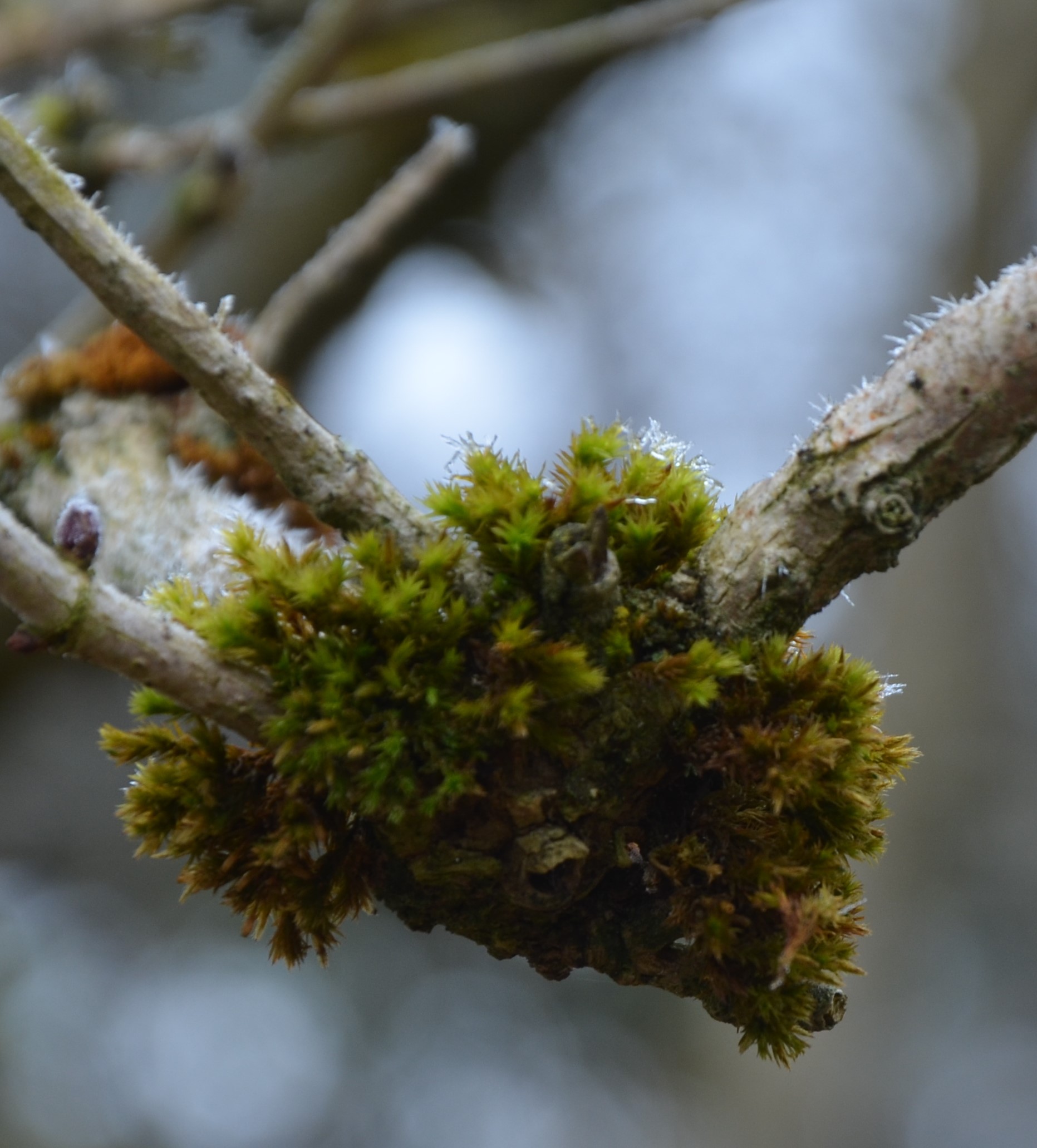
As I am returning toward the entry point of my walk today, I notice the common ivy (Hedera helix) in the oak canopy.
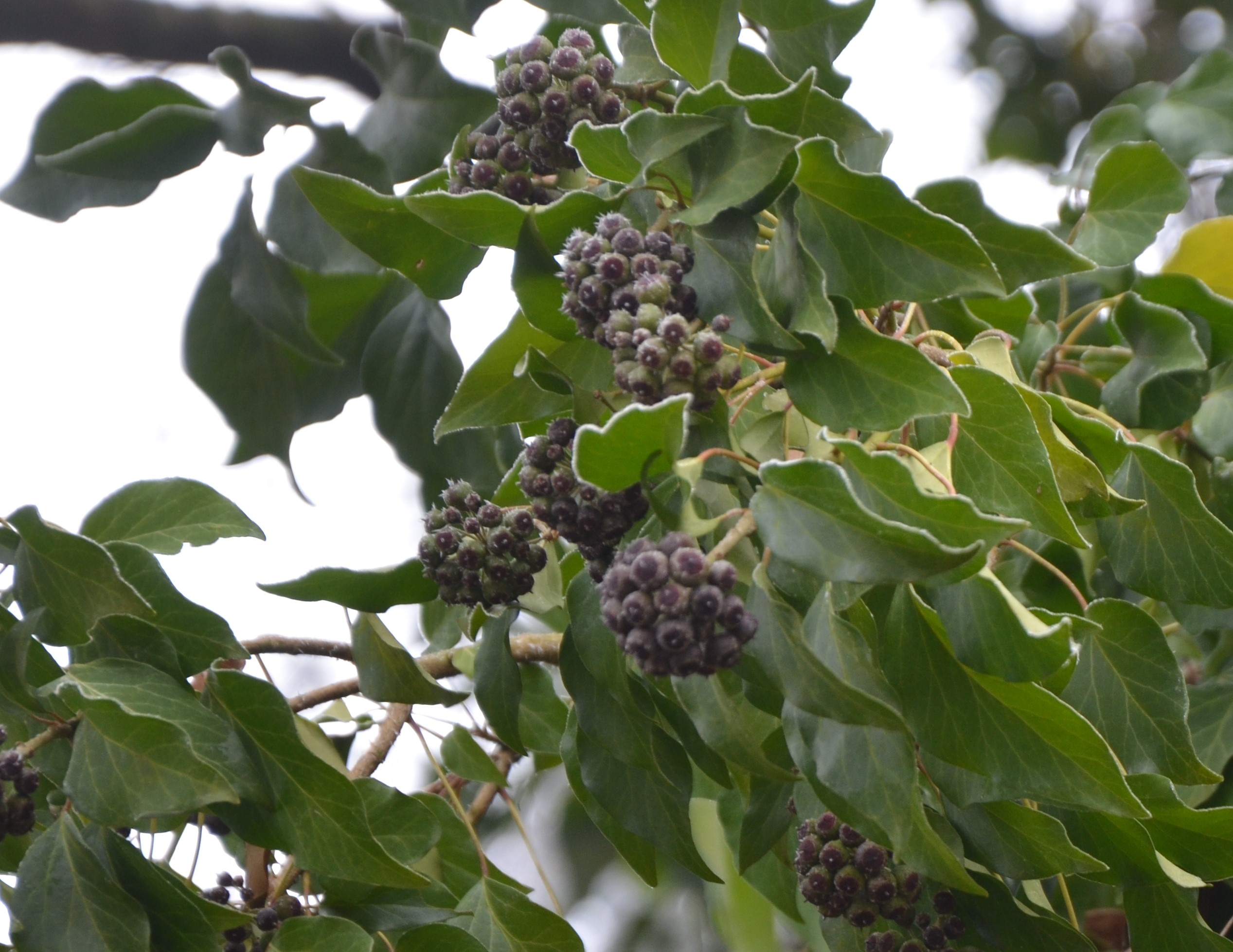
It is a type of evergreen climbing plant that, with its developed fruits, provides the necessary food for the birds in winter and spring. The fruits are toxic to humans, and the plant itself has an important place in folk medicine for the treatment of skin diseases, women white discharge, rheumatism, and gout. It also promotes the secretion of bile. Fresh ivy juice is used to remove warts. When using herbs, one must be extremely cautious, as there are known cases of death due to misuse.


